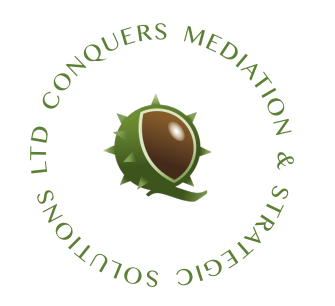HOW WE WORK
The Mediation Process
An important part of the process is making sure you know what to expect. That’s why we’ve put together a straightforward guide to walk you through it.
Mediation, unlike dispute resolution, is where an independent mediator is appointed or agreed on by both parties. A mediator acts for both parties and helps them reach agreements to all of their points of issue; providing an agreed upon plan, and setting out the way forward for all parties to follow.
Before we begin any mediation, creating a safe and suitable environment is key. We take the time to understand you and the issues at hand once we have secured this environment.
The process begins with an introductory statement, where we clarify the mediator’s role and provide an overview of the situation as we understand it. This guarantees that everyone is in agreement from the start.
Once all participants are on the same page, the mediator will recap the key issues, outline the steps of the process, and set clear timeframes for the next stages.
1.
Statement of Issues by Participants
In order to fully outline the issues at hand, each party will be asked to provide their side of the story. At this stage, it is the story that is important: justification of facts and accuracy takes a back seat for now.
Following this, we promptly confirm if this is a matter we can assist in.
2.
Collating Information
The next step is meeting with both parties, either together or separately, to extract more background detail. Here, aim to fully understand both parties, and confirm the facts.
We will then meet again with all parties in attendance, if possible, and go over the issues with all of the information and facts having been fully established
3.
Identifying Problems
Having established an understanding, based in fact, of each side’s issues, we will then aim to find common ground, beginning with those that can be solved most easily and quickly.
4.
Generation and Consideration of Options
As an impartial mediator, we now begin to explore possible scenarios and outcomes. We may put forward a proposal to all parties, and ask them to examine this and share their initial thoughts.
In this way, we can further explore possible resolutions and concessions.
5.
Reaching Agreement
Now the part we’ve all been waiting for. Once all options have been explored, solution ideas have been raised and reached, and all parties are satisfied with the outcomes, we will make the agreements.
6.
Conclusion
We will provide concluding remarks, summarising the discussions and the agreed-upon solution and clearly outlining the next steps. A structured process will be implemented, accompanied by written agreements and statements, detailing a plan of action based on the terms we've established. A date and time for the next stage will also be set, ensuring a smooth and seamless progression.
7.
Review
A key element of Conquers’ Mediation service is our concluding process. Much like a fire inspector or security professional who assesses an incident and provides recommendations, we carefully review the issues at hand. Over agreed-upon intervals, we revisit the resolutions and action plans to fully implement each aspect of the solution. By the end of the process, we aim to satisfy all parties and minimise the risk of future conflicts.
If you’re considering mediation, but would like to know more, then don’t hesitate to give us a call.
I cannot believe that Mark and his business succeeded in safely removing a tenant from a property who was unwilling to leave and had fallen short on rent. After his involvement and interview tactics, we reached a mutual agreement. I am very happy, particularly as we avoided the use of any lawyers.
- James Jones

